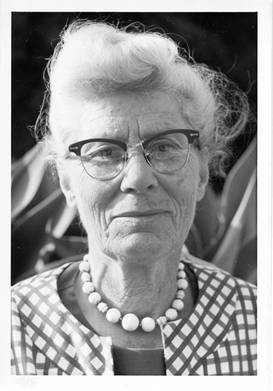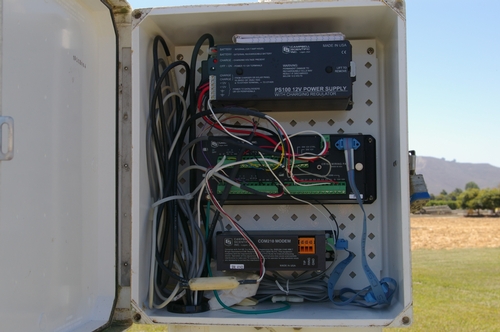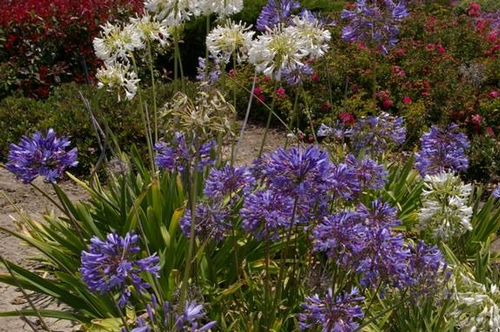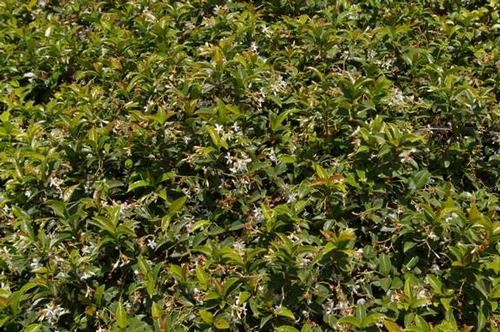- Author: Chris M. Webb
The UC Hansen Agricultural Center will hold a free workshop on low cost/no cost gardening Saturday March, 27, 2010 from 10:00am to 11:30. Learn about:
- gardening techniques
- recycling concepts
- personal creativity
- patience
Find out how to build healthy soil, propagate plants, re-purpose salvaged materials and control pests and diseases on a minimal budget. Bring a note pad, pen or pencil and a grocery bag (plastic or paper).
The workshop is free, but space is limited and registration is required. Please call 525-9293 ext. 214 or email to reserve your spot. Additional details can be found on the UC HAC website.
- Author: Chris M. Webb
Besides the Ventura County Cooperative Extension office, the University of California has another center supporting local agriculture. The UC Hansen Agricultural Center in Santa Paula, is made possible by a trust established by the late Thelma Hansen. The purpose is to conduct research and outreach to keep our county’s agriculture strong and sustainable.
One of the extension programs at the center are field trips for Ventura County youth. Master Gardener and Hansen Center volunteers host the field trips for area kindergarten, second and third graders. During the field trips kids get hands-on learning opportunities related to plant growth, composting, pollination, harvesting and nutrition. While there, the children feast on a nutritious assortment of vegetables freshly picked from the farm.
More about the Hansen Ag Center, and a calendar of upcoming events can be found at, http://ucanr.org/sites/hansenagcenter/.

Thelma Hansen
- Author: Chris M. Webb
On December 1, 2009 the University of California will hold the first annual Ventura County Research Symposium. The event is sponsored by UC Hansen Trust and the University of California Cooperative Extension (UCCE).
The future of agriculture in Ventura County will be discussed. We all know that agriculture has its share of challenges; this symposium will showcase local work that offers solutions to some of the most pressing agricultural issues.
The symposium is intended for growers, policy makers, community leaders, educators, journalists and anyone else who cares about the future of farming in Ventura County. There is no charge to attend. Details and pre-registration information can be found in the calendar section on our home page or by clicking here.
We hope to see you there!
- Author: Chris M. Webb
Today, Ventura County UCCE’s Maren Mochizuki explains the routine maintenance required to keep CIMIS weather stations functioning accurately.
Data from CIMIS stations, please see previous post for details, provide accurate weather data to aid growers in irrigation planning and scheduling. To ensure that each individual station measures and records accurately, monthly maintenance is performed at all stations.
For the CIMIS station at the Hansen Agricultural Center in Santa Paula, Staff Research Associate Maren Mochizuki checks the functioning of all the sensors. She also checks the calibration of the relative humidity sensor using a psychrometer. A psychrometer has one thermometer exposed to ambient air and another thermometer attached to a wick that is saturated with distilled water; a battery-powered fan forces air past the wick to evaporate the water and cool the temperature measured by the thermometer.
Using a conversion table, we can estimate the relative humidity based on the difference between the ambient temperature and the wetted temperature. Drier air means more evaporation and a larger temperature difference between the two thermometers. If the difference between the relative humidity calculated by the psychrometer reading and the station sensor is greater than 5%, the station sensor requires re-calibration. The station is an inviting perch for birds so we also hose it down monthly to keep it clean.

inside of CIMIS station

psychrometer
- Author: Chris M. Webb
An interesting study looking at the water requirements of common landscape plants, as told by Ventura County UCCE Staff Research Associate Maren Mochizuki.
Plants used commonly in the California landscape may have different water requirements for growth and aesthetics depending on the location in which they are grown. One indicator of the amount of water a plant needs is the local evapotranspiration (ET), which is the loss of water to the atmosphere from the surface of plants and soil (evaporation) and from plant tissues via their pores or stomata (transpiration). More information on evapotranspiration can be found at the California Irrigation Management Information System (CIMIS) website at, http://wwwcimis.water.ca.gov/cimis/infoEtoOverview.jsp.
Evapotranspiration varies considerably with the weather and location. In studies conducted by UCCE researchers across the state, (north coast, north inland, south coast, and south desert climates) nine common landscape species including agapanthus, day lily, and star jasmine are being watered based on 80%, 60%, 40% and 20% of daily local ET measurements. In the south coast region watering has ranged from weekly during the summer for the 80% ET to never for the 20% treatment.
Here in the south coast, the project is being conducted by Jim Downer, Ventura County UCCE Farm Advisor; Don Hodel, Los Angeles County Environmental Horticulture Advisor; and Maren Mochizuki, Staff Research Associate. When starting the project they allowed the plants to establish first, watering all of them equally and now have measured clippings and rated their appearance for the past two years. They are currently analyzing the data gathered so far and will continue the study one more year. Check back soon for some preliminary results!

agapanthus

day lily

star jasmine



